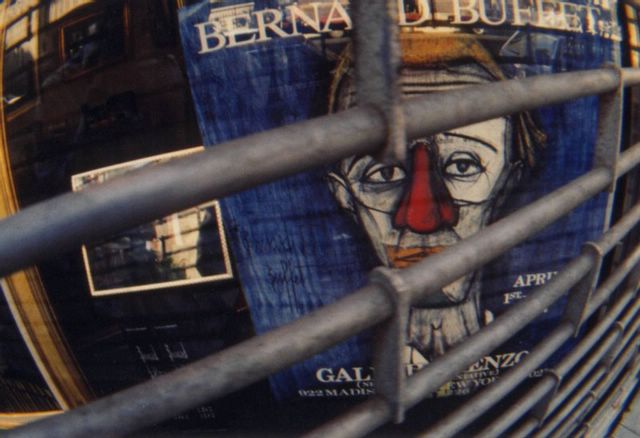Jessie Cohen/Smithsonian National Zoo, via Reuters
I see right through ya, ya wee bastard!!!
Scientists who study the evolution of visual signaling have identified a wide and still expanding assortment of features and behaviors that make something look cute: bright forward-facing eyes set low on a big round face, a pair of big round ears, floppy limbs and a side-to-side, teeter-totter gait, among many others.However, there can be a backlash against cute's insidious Dark Side:Cute cues are those that indicate extreme youth, vulnerability, harmlessness and need, scientists say, and attending to them closely makes good Darwinian sense. As a species whose youngest members are so pathetically helpless they can't lift their heads to suckle without adult supervision, human beings must be wired to respond quickly and gamely to any and all signs of infantile desire.
The human cuteness detector is set at such a low bar, researchers said, that it sweeps in and deems cute practically anything remotely resembling a human baby or a part thereof, and so ends up including the young of virtually every mammalian species, fuzzy-headed birds like Japanese cranes, woolly bear caterpillars, a bobbing balloon, a big round rock stacked on a smaller rock, a colon, a hyphen and a close parenthesis typed in succession.
The greater the number of cute cues that an animal or object happens to possess, or the more exaggerated the signals may be, the louder and more italicized are the squeals provoked.
Cuteness is distinct from beauty, researchers say, emphasizing rounded over sculptured, soft over refined, clumsy over quick. Beauty attracts admiration and demands a pedestal; cuteness attracts affection and demands a lap. Beauty is rare and brutal, despoiled by a single pimple. Cuteness is commonplace and generous, content on occasion to cosegregate with homeliness.
"Cute cuts through all layers of meaning and says, Let's not worry about complexities, just love me," said Dr. Dutton, who is writing a book about Darwinian aesthetics. "That's where the sense of cheapness can come from, and the feeling of being manipulated or taken for a sucker that leads many to reject cuteness as low or shallow."Oh, and babies aren't cute on purpose. Suuuuure.
Madison Avenue may adapt its strategies for maximal tweaking of our inherent baby radar, but babies themselves, evolutionary scientists say, did not really evolve to be cute. Instead, most of their salient qualities stem from the demands of human anatomy and the human brain, and became appealing to a potential caretaker's eye only because infants wouldn't survive otherwise.Human babies have unusually large heads because humans have unusually large brains. Their heads are round because their brains continue to grow throughout the first months of life, and the plates of the skull stay flexible and unfused to accommodate the development. Baby eyes and ears are situated comparatively far down the face and skull, and only later migrate upward in proportion to the development of bones in the cheek and jaw areas.
Baby eyes are also notably forward-facing, the binocular vision a likely legacy of our tree-dwelling ancestry, and all our favorite Disney characters also sport forward-facing eyes, including the ducks and mice, species that in reality have eyes on the sides of their heads.
The cartilage tissue in an infant's nose is comparatively soft and undeveloped, which is why most babies have button noses. Baby skin sits relatively loose on the body, rather than being taut, the better to stretch for growth spurts to come... that lax packaging accentuates the overall roundness of form.
Baby movements are notably clumsy, an amusing combination of jerky and delayed, because learning to coordinate the body's many bilateral sets of large and fine muscle groups requires years of practice. On starting to walk, toddlers struggle continuously to balance themselves between left foot and right, and so the toddler gait consists as much of lateral movement as of any forward momentum.
Researchers who study animals beloved by the public appreciate the human impulse to nurture anything even remotely babylike, though they are at times taken aback by people's efforts to identify with their preferred species.
I don't really have a point with any of this - I just thought it was kinda cool, in a know-thy-enemy kind of way.

3 comments:
Well, I don't know. "...bright, forward-facing eyes set low on a big round face, a pair of big round ears, floppy limbs and a side-to-side teeter-totter gait"...sounds kinda like George drunk to me.
Awwwww... that is such a cute picture. I don't know about cute scams, but that baby... oooooh.
Darwinian aesthetics, what a fascinating topic to research... wait, look at that cute panda! Woojie woojie woo!! Who's a good boy?
Post a Comment